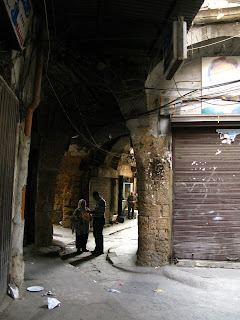The best-of-the –best, the Top 10, the countdown of a year and a half of Asia,….
10. The Great Wall of China – It’s a wonder of the world for a reason, and being there without a horde of tourists and vendors (let alone anyone else) gave it that something special. But to really top it off, walking out of bounds past the “do not enter signs” revealed what the Wall looks like without the restoration and puts its age into perspective.

9. Indian Food – After a year in Korea, anything guaranteed vegetarian is a highlight. But India, a country filled with vegetarians who know what it means and consider it religious, well, now we’re talking. But add to it the spices and pure variety, and I think it has replaces Mexican to become my most favorite food (but don’t hold me to that once I return to the Americas).

8. Obamaland – Election day was a party described by many American ex-pats by noting that in one day they were once again proud to be American. The party has continued to unite in the most uncommon places. On the beach in Vigan, Philippines a horde of kids all joined me in with a round of “Obama!” cheers. Taxi drivers say he’s a great man. And one man, in a back courtyard of Tibet looks at me once I said I was American and gives me the thumbs up, “Obama, good!” It’s a great change to what was.

7. Lalunga Pass, Tibet – At 5,050 meters, the Lalunga Pass is part of the highest plateau in the world. Your head feels like it is in a vice grip, opening a car door leaves you short of breath and the wind that is whipping the prayer flags into a fury freezes your fingers in a minute or two. But up there, you are looking at two 8,000 meter (plus) peaks on top of a range of snow-covered wonders and the sky, well, there is no way to describe that blue.

6. Varanasi and Kathmandu’s Burning Ghats – As noisy as Tibet’s Lalugna Pass is, the Burning Ghats are quiet. There’s the sound of piling wood, and it crackling, then there’s the ash that flies up into the sky, over the river and into the night. In two crowded cities, the silence is appreciated. The fact that you’re watching a funeral and cremation, and the ash is human, may turn the average person off, but after a while it adds to the peace and reinforces the Buddhist idea of impermanence. Besides, it sure beats the traditional Tibetan burial where they cut up the body for the vultures…

5. Kaesong, North Korea - It was only one day, but I think of it often. There was the lady in the plaid, pleated skirt with the sequence top. The girl who stuck her tongue out at me with such emotion, and the crowds who walked their bikes in circles around the city, waiting at the corner for the invisible light to turn red for the invisible traffic so they may remain in order. It was a time warp and a reality check and a reminder for how far out if touch a government is able to make their people through a little brainwashing.

4. Angkor Wat on bike – It’s hard to top these ancient temples, but add to it the silence and freedom to take back dirt roads where only monkeys and birds reside, and you are able to take in some amazing sights completely alone. And freedom from being harassed to buy T-shirts, postcards, books or anything else, is always welcome.

3. Flamingos and Tigers in India – I was giddy when I first saw a wild flamingo. In hindsight it may not seem like such a feat, but it brought home the idea that those things guarding the entrance pond at the San Diego Zoo really do fly. It also meant I was out of the city. Tigers, on the other hand, now there’s a creature that legends are built of, and when I first saw them in the wild, and took photos, I couldn’t wipe the perma-grin off my face. I held onto my camera so tight afraid that something bad would happen to it before it could reveal its secrets to the world. The fact that it’s only a point and shoot gives you an idea, we were pretty close!

2. Mongolia Gurs – specifically at night when the entire sky opens up to tell its stories from the opening at the stove pipe, these gurs are some of the best buildings I have ever slept in. The paint is charming, the beds lumpy, and the fire in the middle completely dependent on the fuel source – wood and it’s a spectacular night full of heat and comfort, sheep shit, and you are filling it every 14 minutes so think cold, but priceless.

1. The Elephant Nature Park – For a week, Kamoon, my favorite elephant, slept outside of my hut and snored during the night. At daybreak I would wake to the fog shifting through the trees on the hillside, dew on the acres of grassland, and Kamoon thumping hay across his foot before chomping. Later I would feed him and others, even the babies, bananas, and at lunch one would try to steel food off my plate. Elephants don’t like green peppers either.

So that’s my ten best. They all go down best with a good cup of coffee, but you might be best off bringing that with you unless you secretly desired store-bought instant. Asia is a crazy place – so big, so diverse and so full of both people and opportunities. In 18 months I didn’t even tackle half of it. When I started, I always equated Asia with China and Japan, and though I visited both, they can’t even start to define the continent, and I can’t define it either.



















































